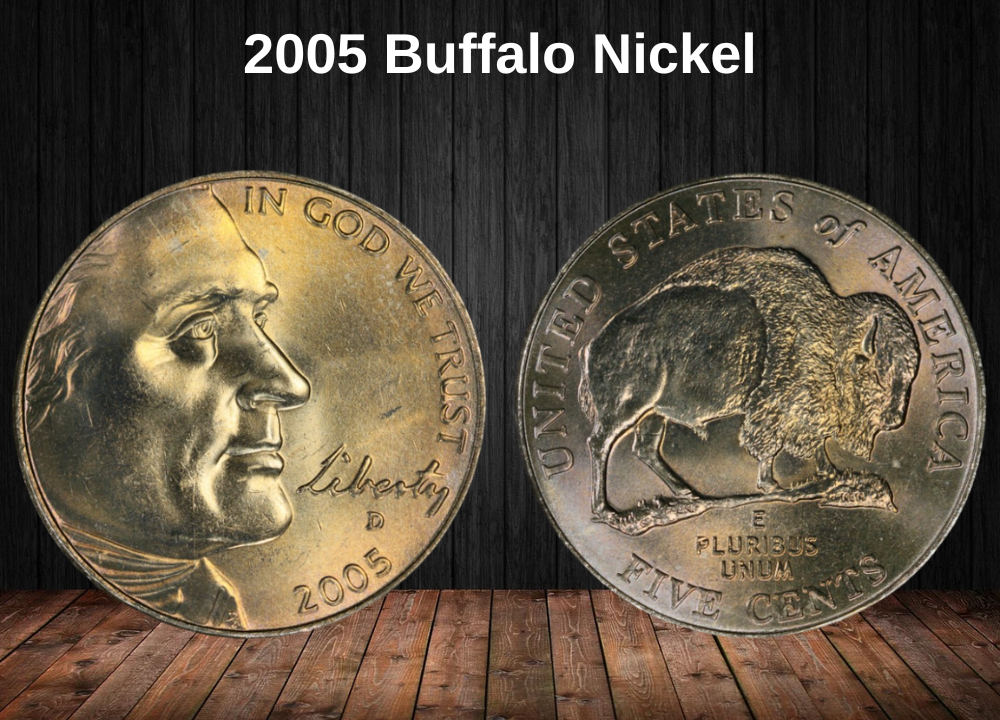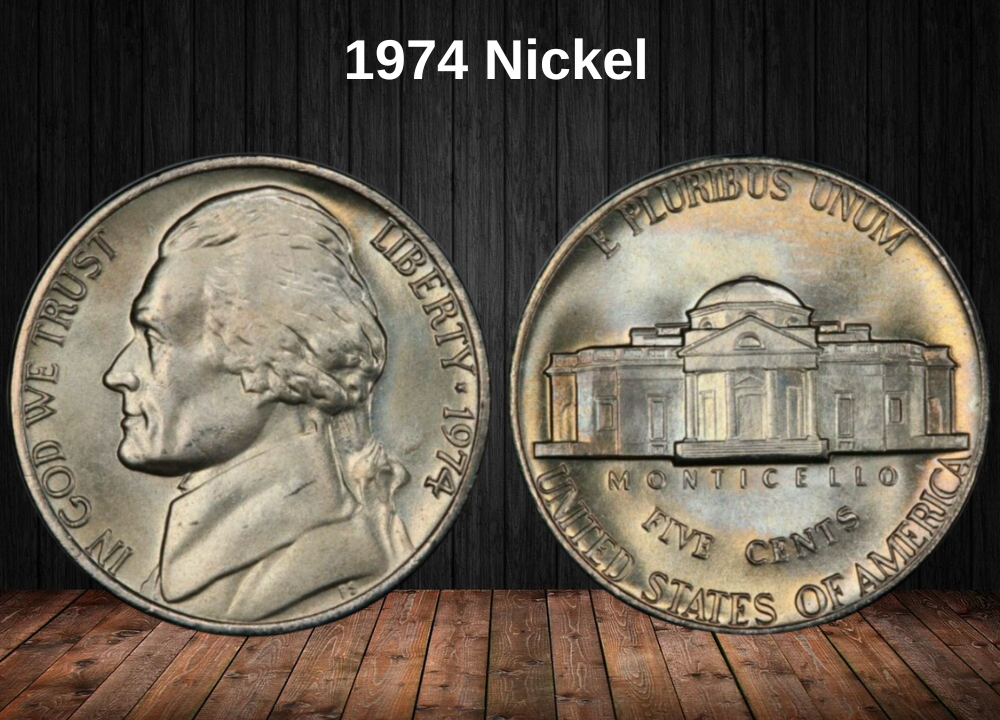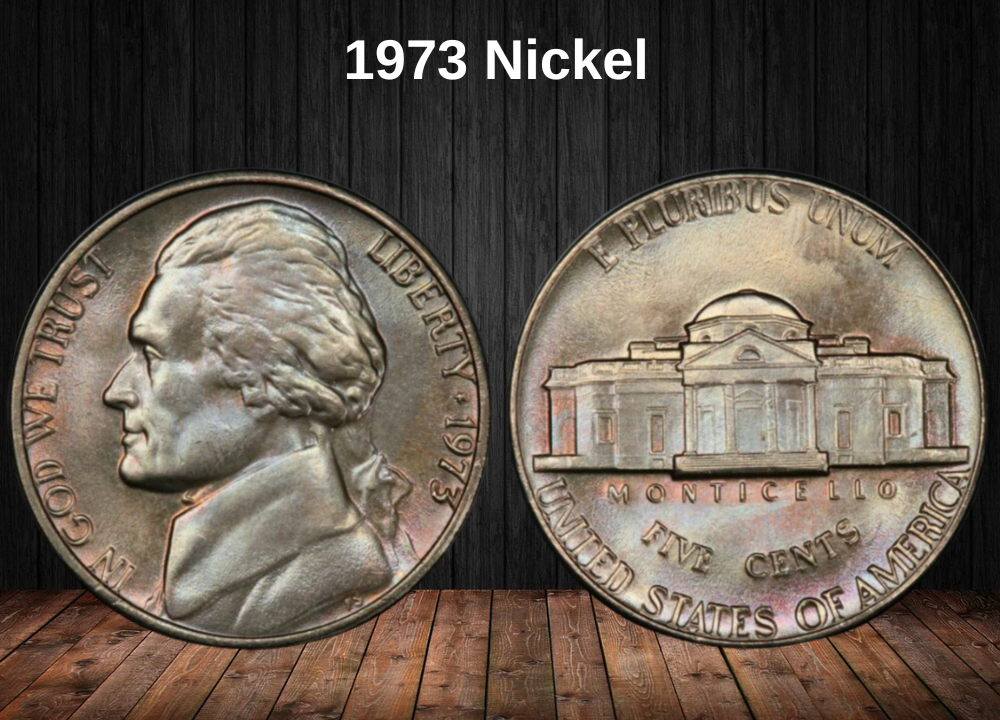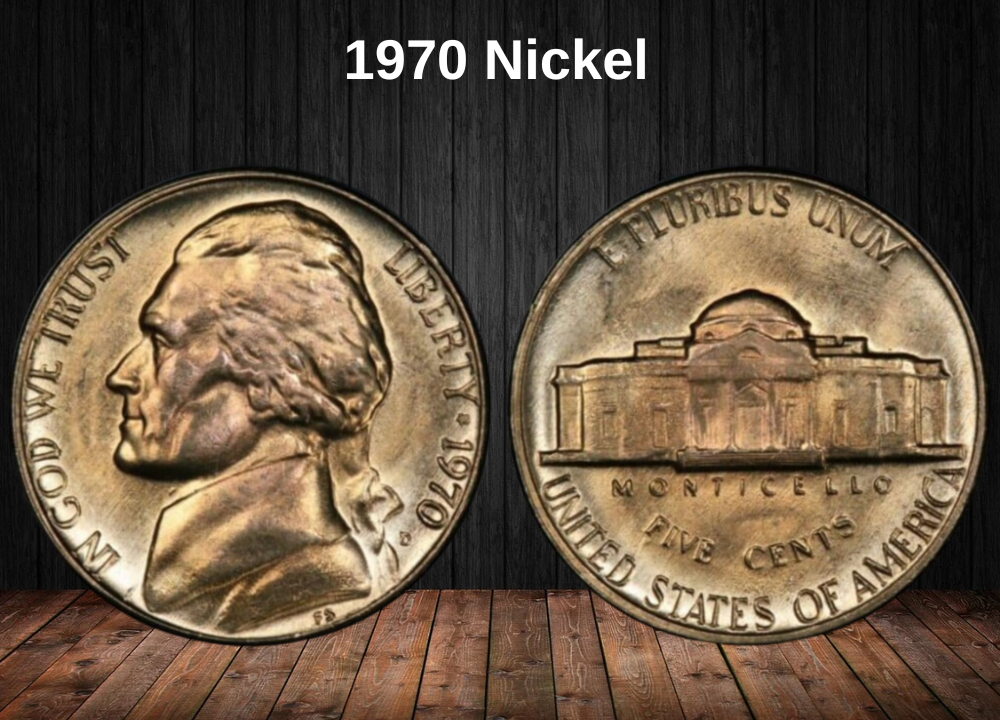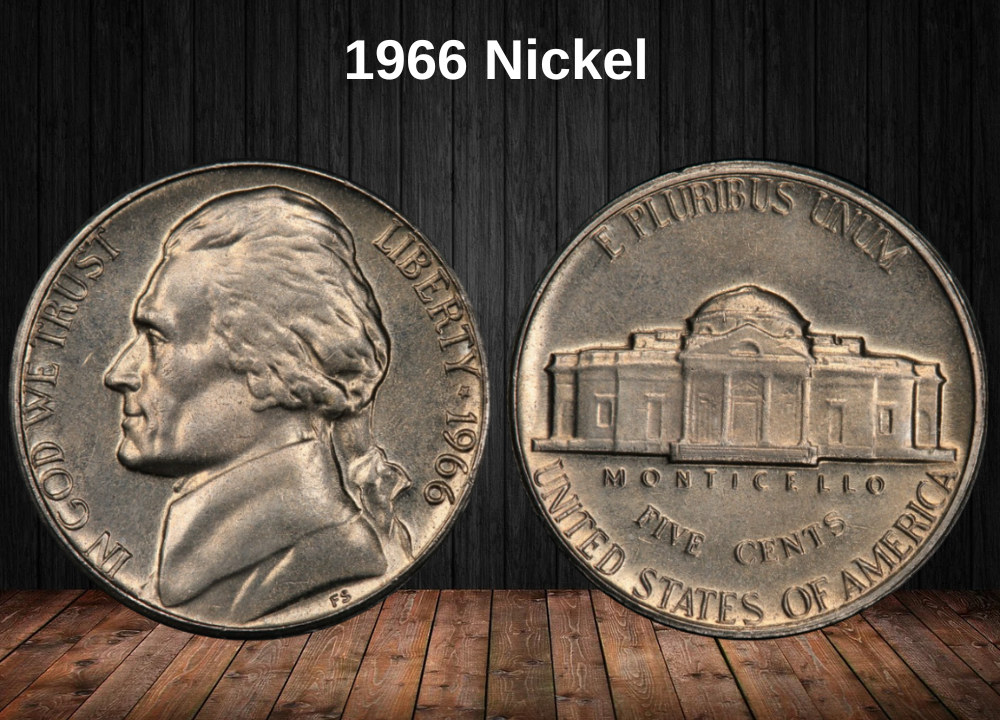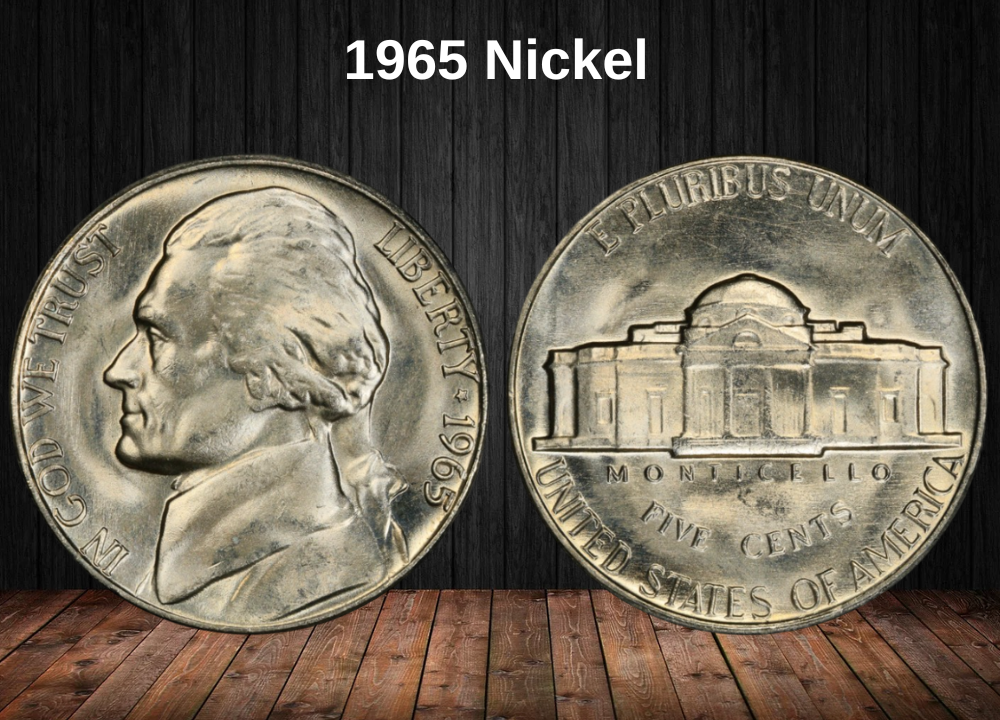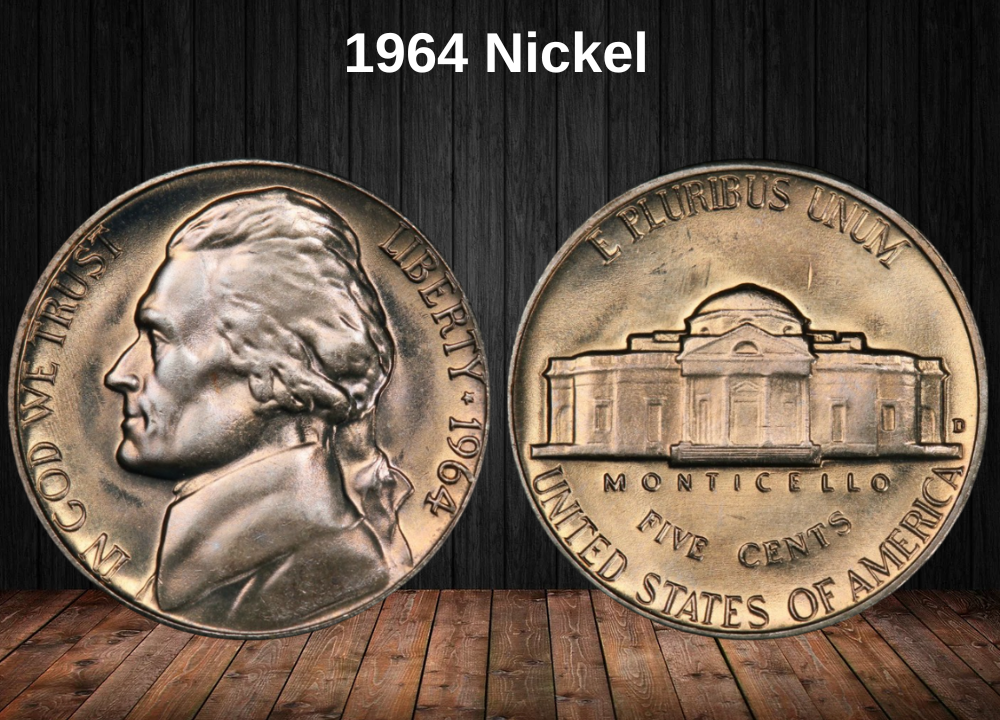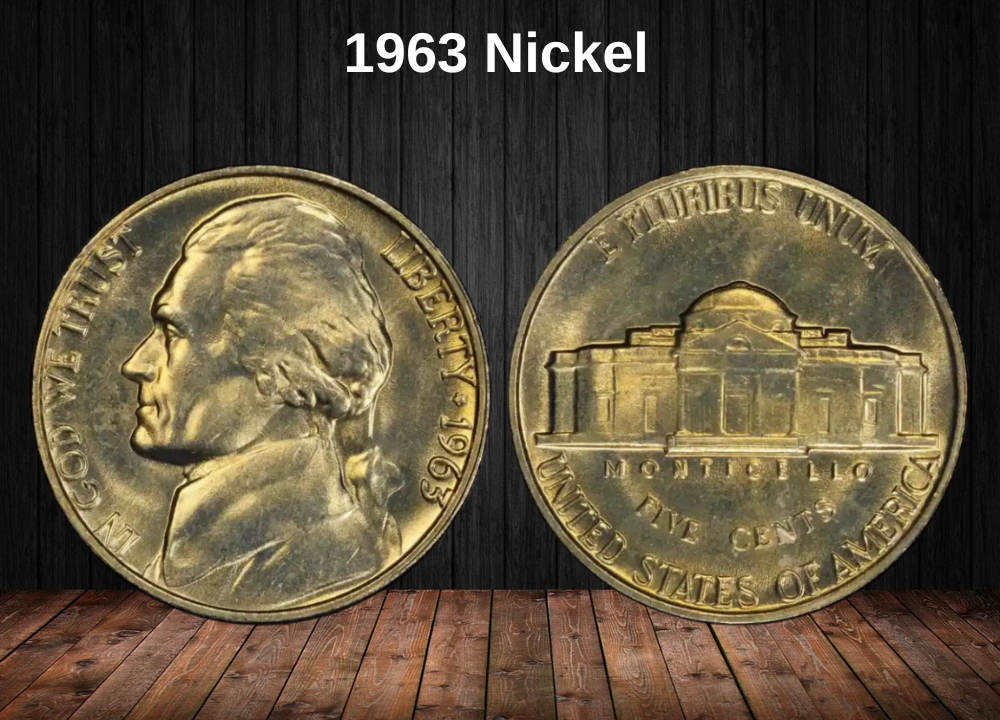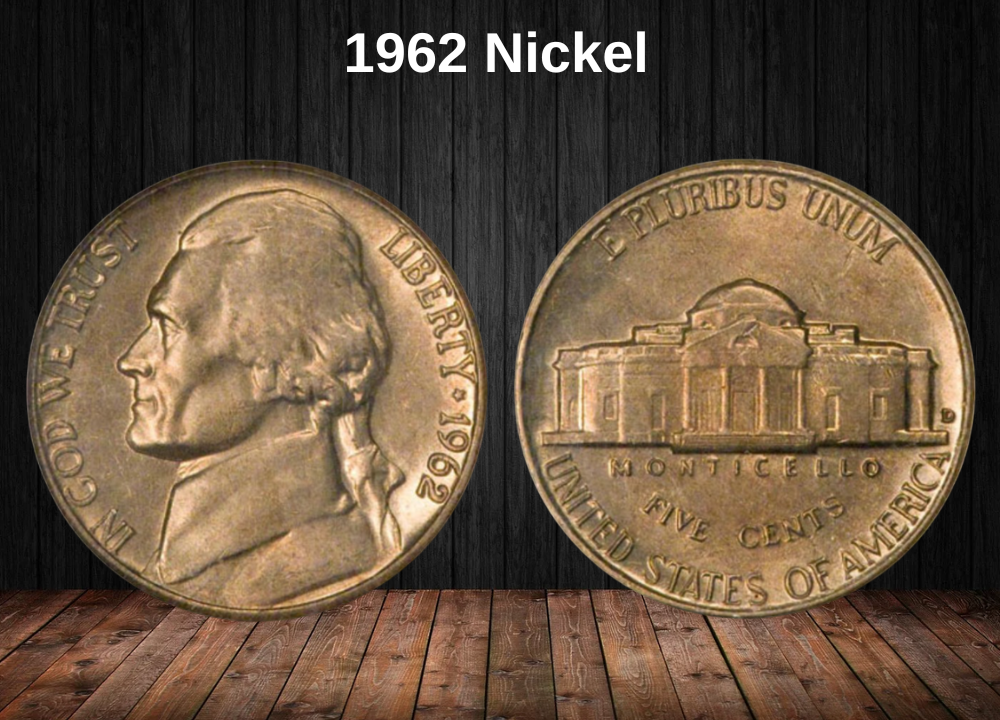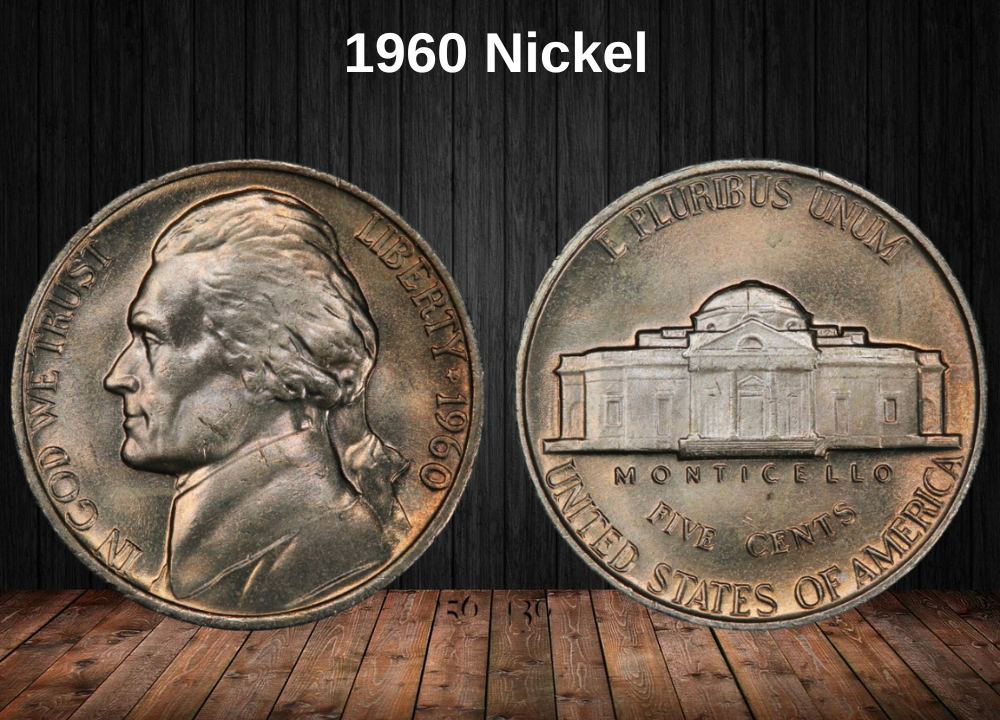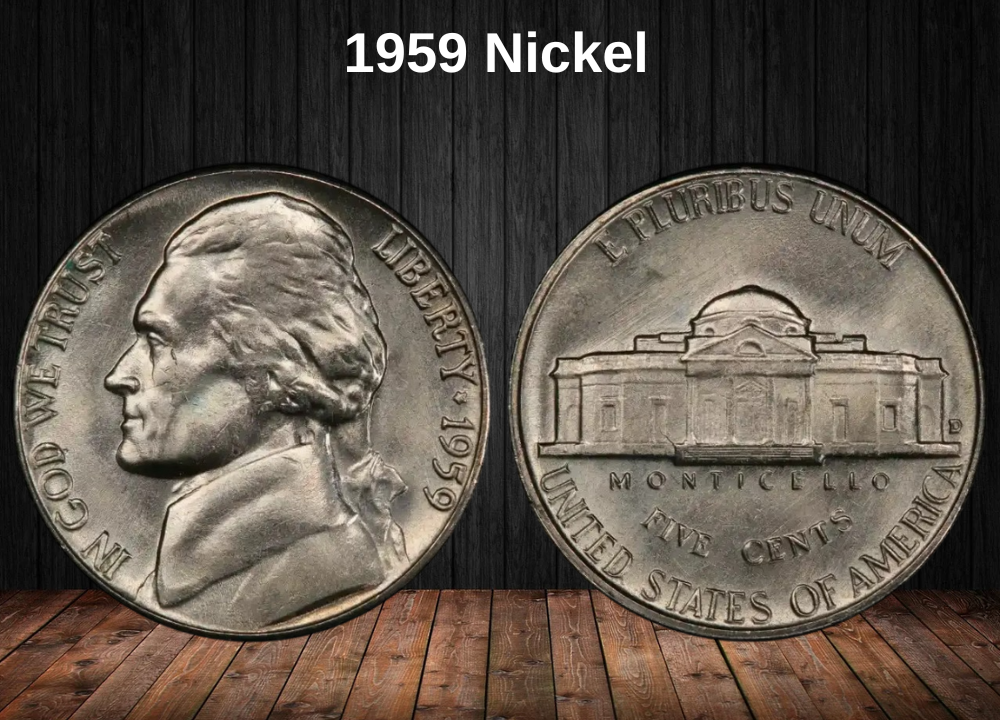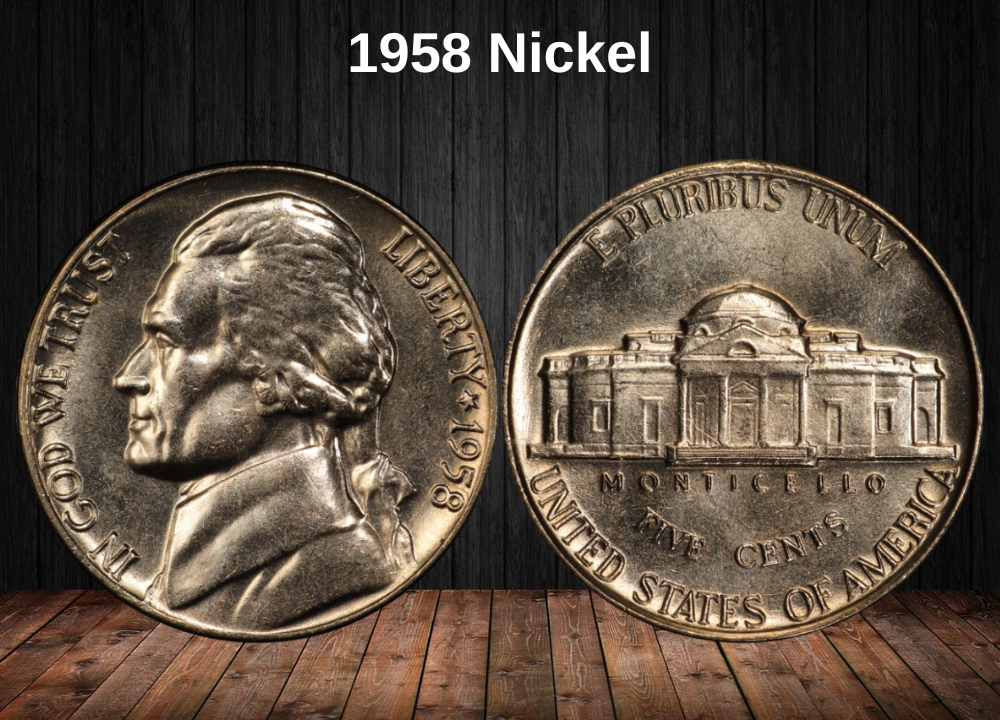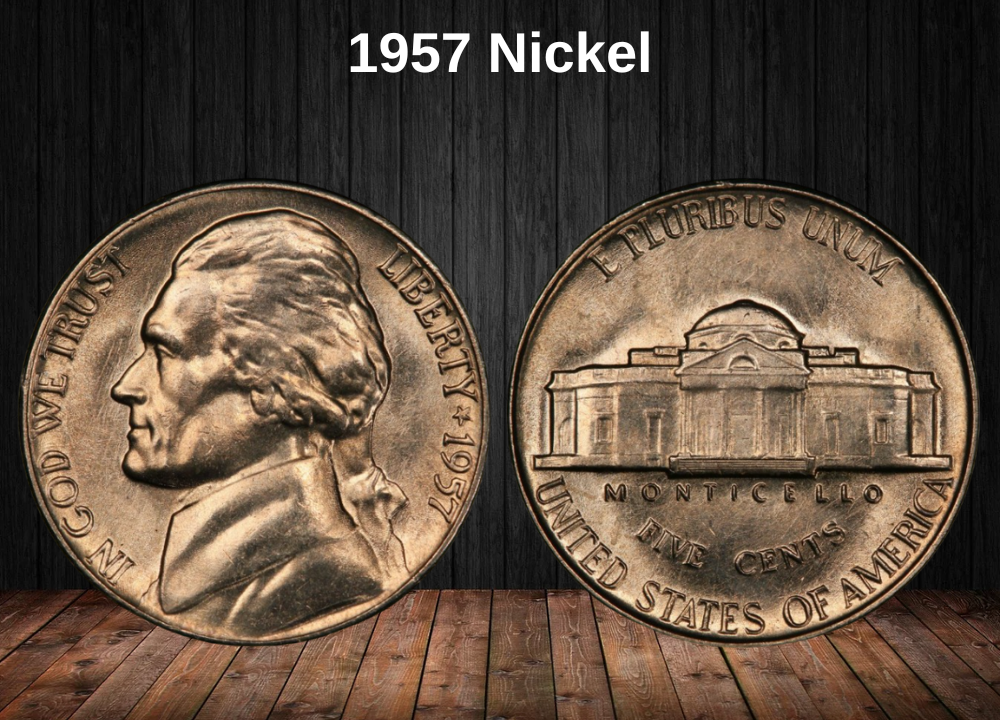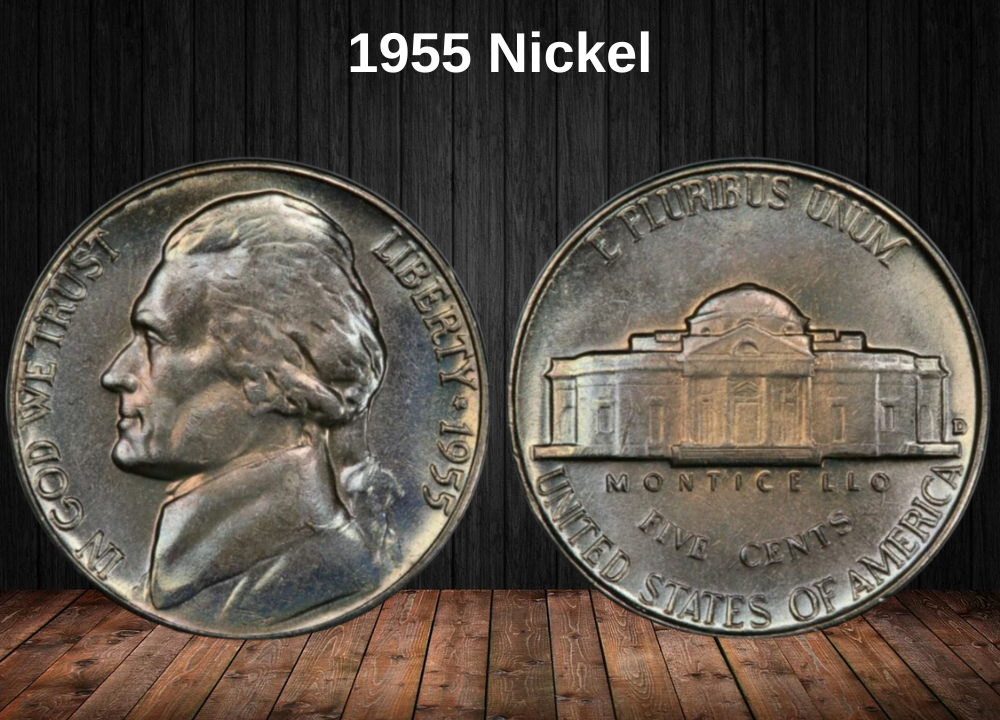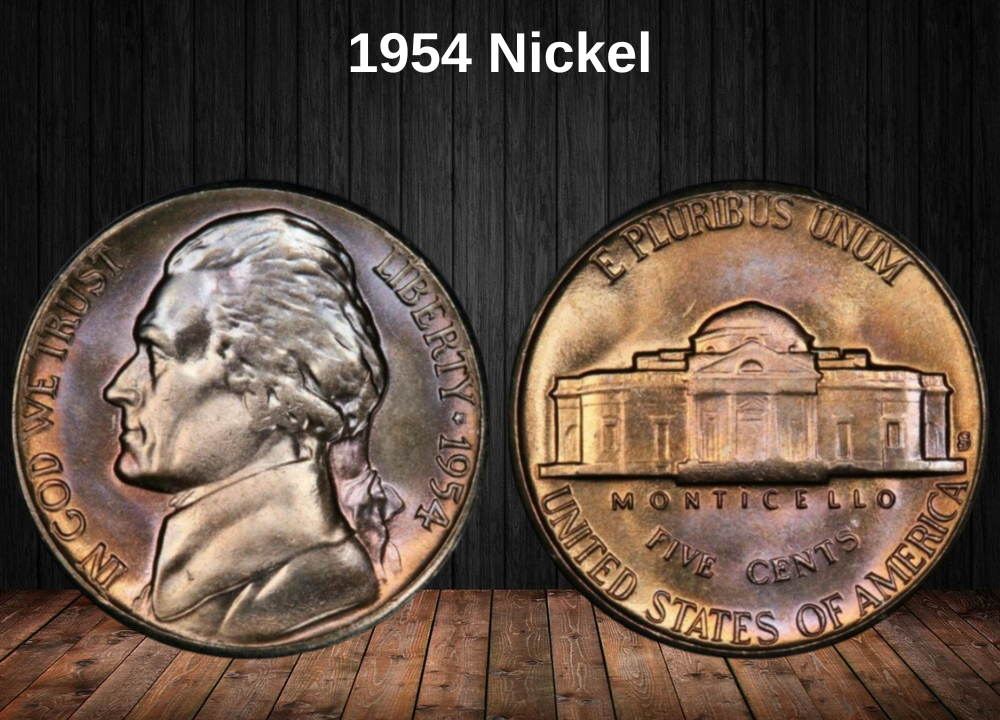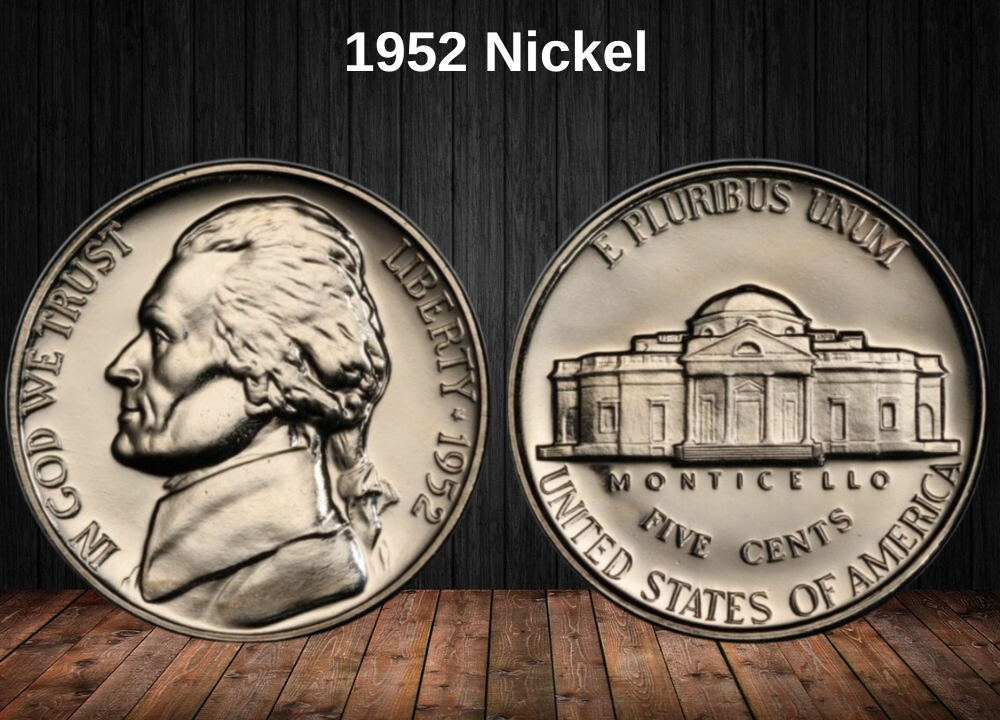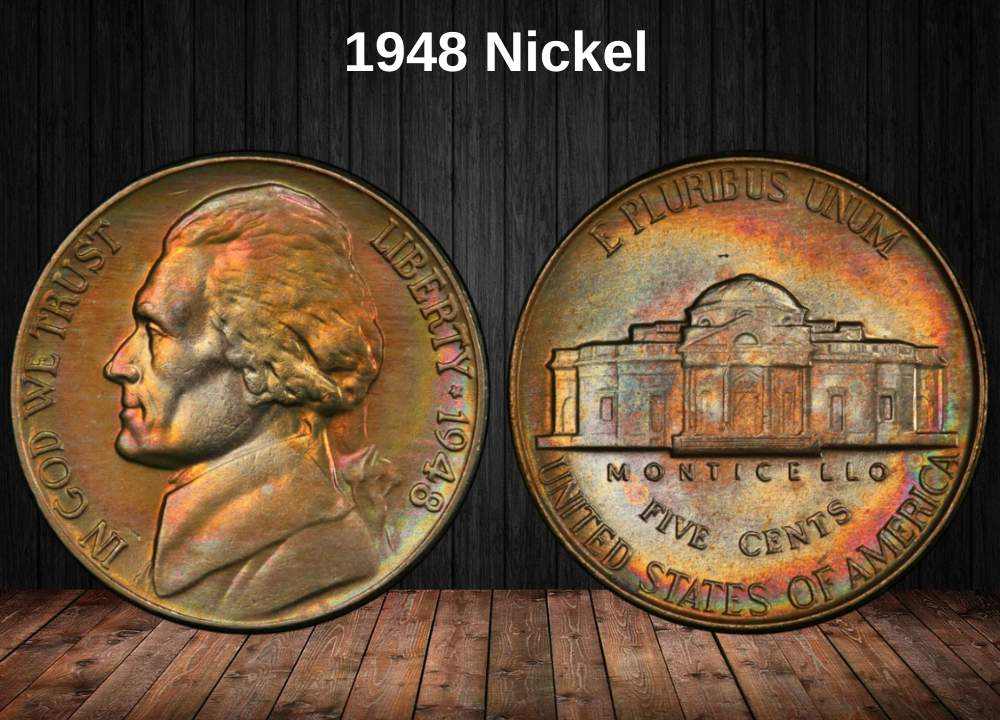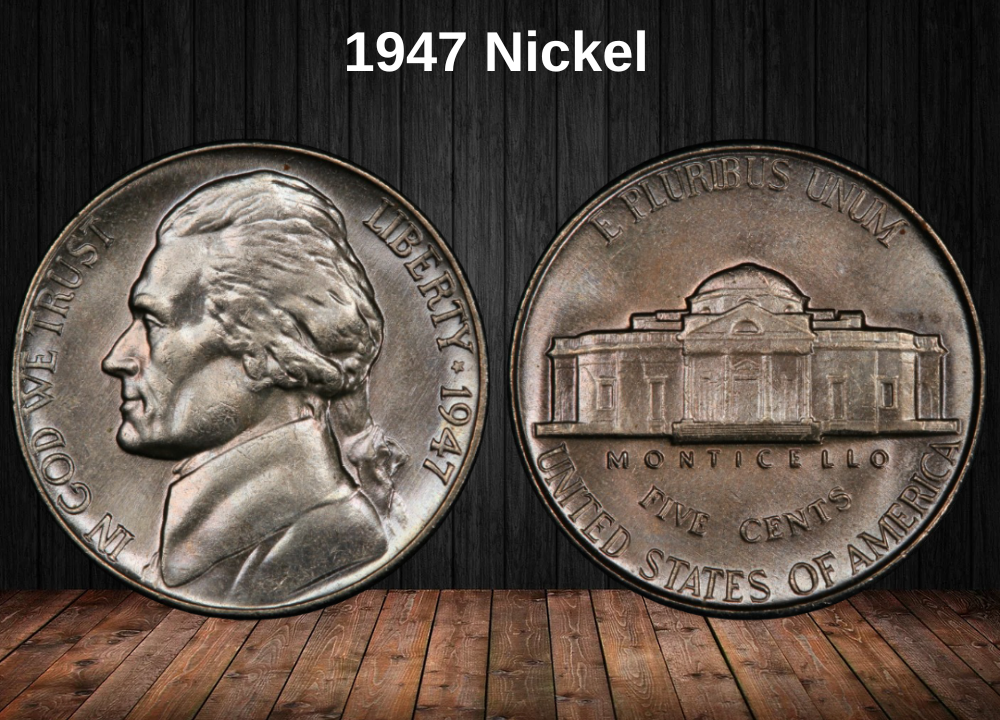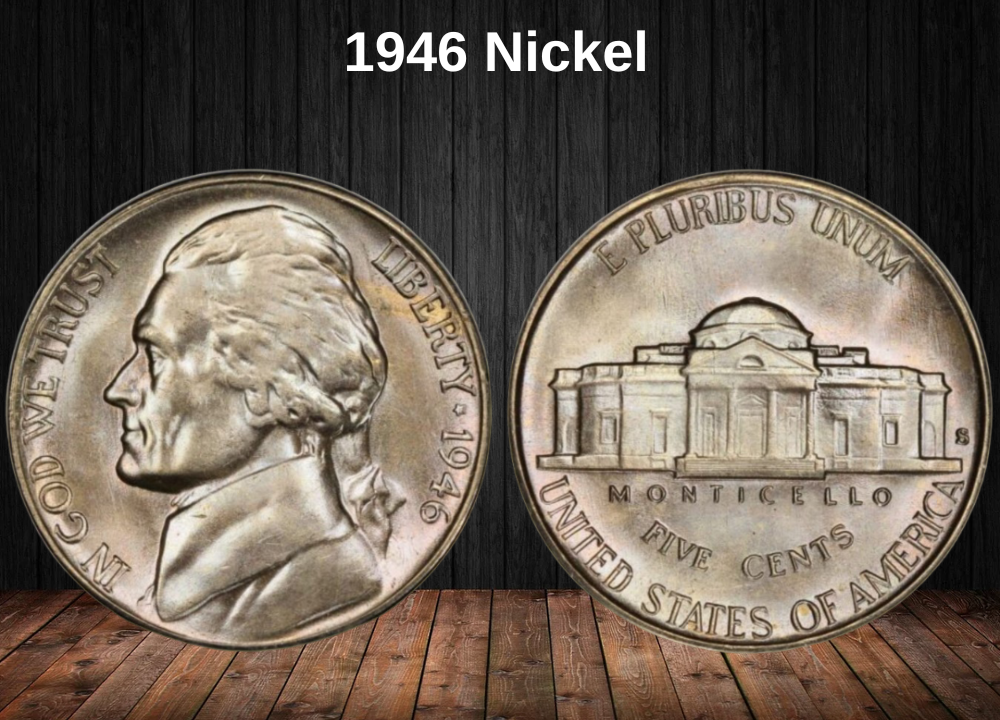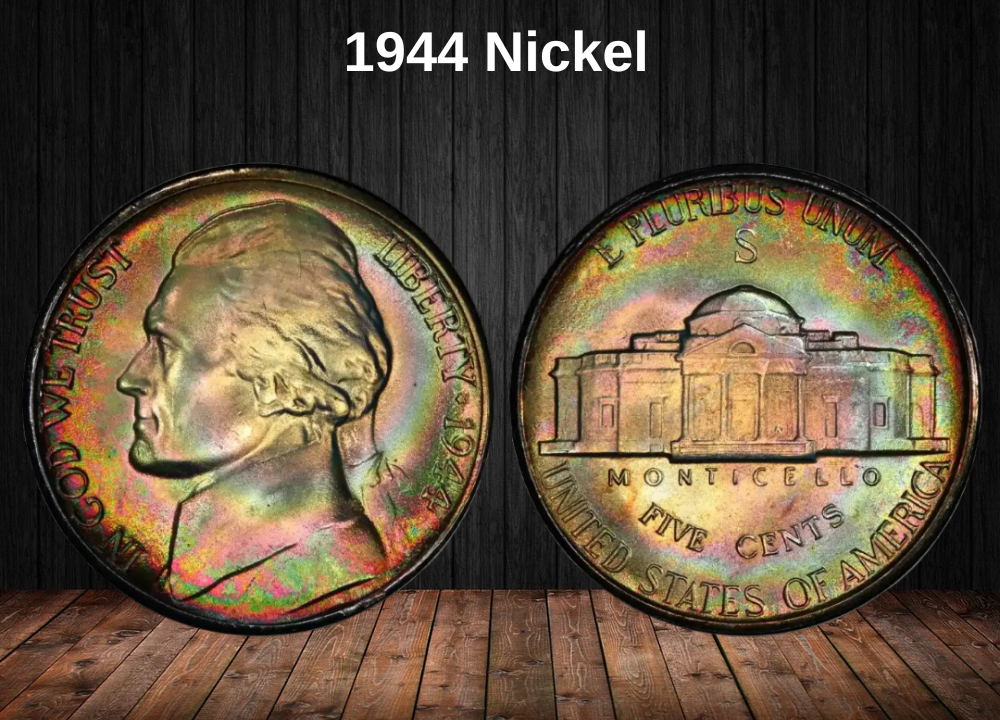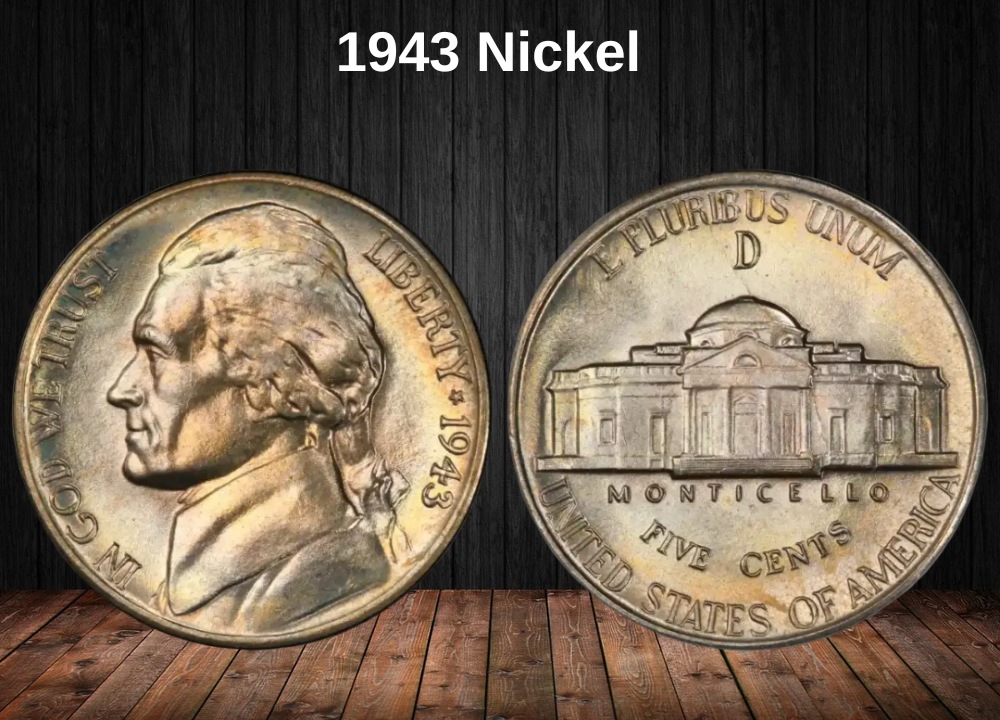The 1942 Jefferson nickels are especially appealing to collectors due to their historical significance during World War II. As the U.S. entered the war in December 1941, the demand for nickel metal—crucial for producing military equipment—increased dramatically. To preserve nickel for the war effort, the U.S. Mint introduced a new coin composition in mid-1942.
Earlier that year, nickels were struck using the usual cupronickel alloy. But starting in late 1942, the Mint began producing wartime nickels made from an alloy of 35% silver, 56% copper, and 9% manganese. These wartime coins are easy to identify by the large mint mark (P, S, or D) placed above Monticello’s dome on the reverse.
The value of a 1942 Jefferson nickel depends on its variety, condition, and whether it features any notable errors, such as the 1942-D/D repunched mint mark.
1942 Jefferson Nickel Value Chart
| Condition | 1942 Nickel | 1942-P (Silver) | 1942-S (Silver) | 1942-D | 1942-D Over D (RPM) |
|---|---|---|---|---|---|
| Good | $0 | $1 | / | $1 | $50 |
| Very Good | $0 | $1 | / | $2 | $60 |
| Fine | $0 | $1 | $3 | $3 | $75 |
| Very Fine | $2 | $2 | $3 | $8 | $140 |
| Extra Fine | $3 | $2 | $4 | $10 | $200 |
| About Uncirculated (AU) | $4 | $2 | $4 | $13 | $300 |
| Mint State (MS60) | $8 | $6 | $7 | $22 | $1,350 |
| Mint State (MS65) | $32 | $28 | $27 | $55 | $4,250 |
| Proof (PR65) | $80 | $135 | / | / | / |
History of the 1942 Jefferson Nickel
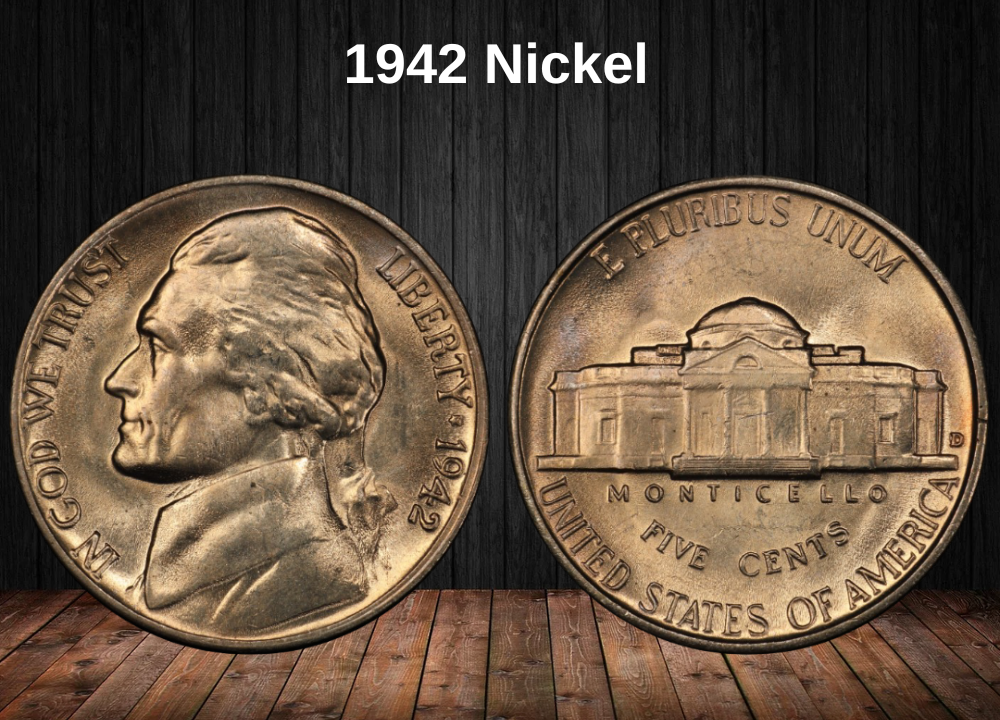
The year 1942 marked a turning point in the history of U.S. coinage, especially for the Jefferson nickel series. For the first time since nickels were introduced in 1883, the U.S. Mint changed the coin’s composition—driven by the country’s entry into World War II.
With the U.S. fully involved in the war by mid-1942, nickel metal became a crucial material for military manufacturing, particularly for artillery and armor plating. To preserve nickel for the war effort, Congress authorized a temporary change in the coin’s metal content.
Beginning in the second half of 1942, the Mint replaced the standard cupronickel alloy with a wartime composition consisting of 35% silver, 56% copper, and 9% manganese. These are known today as “wartime nickels”, and they remained in circulation until 1945, when the original alloy was restored.
1942 Jefferson Nickel Types & Mintages
| Mint Location | Coin Type | Mintage |
|---|---|---|
| Philadelphia | 1942 No Mint Mark (cupronickel) | 49,789,000 |
| Philadelphia | 1942-P (silver wartime nickel) | 57,873,000 |
| Philadelphia | 1942 No Mint Mark Proof (cupronickel) | 29,600 |
| Philadelphia | 1942-P Proof (silver wartime proof) | 27,600 |
| San Francisco | 1942-S (silver wartime nickel) | 32,900,000 |
| Denver | 1942-D (cupronickel) | 13,938,000 |
| Total | 154,557,200 |
Thanks to the switch in metals, wartime Jefferson nickels became a unique subtype within the series, easily recognizable by the large mint mark above Monticello on the reverse. These silver-containing nickels are now highly sought after by collectors for their historical value, distinct design features, and precious metal content.
Features of the 1942 Jefferson Nickel
The obverse of the 1942 Jefferson Nickel
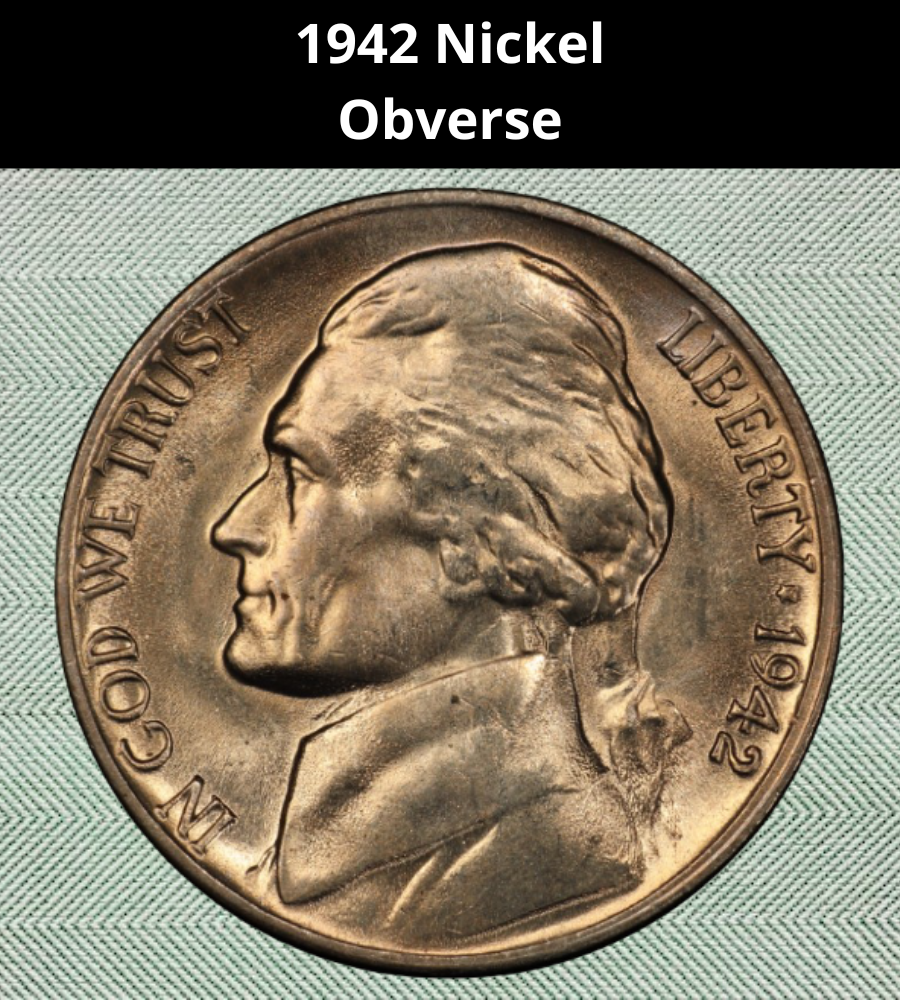
The obverse (front) of the 1942 Jefferson nickel continues the design introduced in 1938 by Felix Schlag, featuring a left-facing portrait of Thomas Jefferson, the third President of the United States.
The design is simple yet classic, framed by two key inscriptions:
- “IN GOD WE TRUST” curves along the left rim of the coin.
- “LIBERTY” followed by the year “1942” appears along the right rim, separated by a small star.
This timeless layout remained unchanged during the transition from the regular cupronickel alloy to the wartime silver composition later that year.
The reverse of the 1942 Jefferson Nickel

The reverse of the 1942 Jefferson nickel features a detailed rendering of Monticello, Thomas Jefferson’s historic home in Virginia. This iconic image—also designed by Felix Schlag—remained unchanged across both the pre-war and wartime nickels of that year.
Surrounding the central design are several important inscriptions:
- “E PLURIBUS UNUM” is written in an arc along the top edge of the coin.
- Below the Monticello building, you’ll find the labels “MONTICELLO”, “FIVE CENTS”, and “UNITED STATES OF AMERICA” stacked in three lines.
The placement and style of the mint mark vary depending on the coin type:
- Pre-war nickels (Philadelphia and Denver) either have no mint mark or display a small “D” to the right of Monticello.
- Wartime silver nickels are easy to identify by a large mint mark (“P”, “S”, or “D”) positioned directly above Monticello’s dome—a unique feature exclusive to silver-alloy Jefferson nickels minted between 1942 and 1945.
1942 Jefferson Nickel Specifications
- Face Value: 5 cents ( $0.05 )
- Shape: Round
- Edge: Plain
- Pre-war Composition: 75% copper, 25% nickel
- Wartime Composition: 56% copper, 35% silver, 9% manganese
- Diameter: 0.835 inches ( 21.2 mm )
- Thickness: 0.0768 inches ( 1.95 mm )
- Weight: 5 grams ( 0.1607 troy oz )
- Silver Weight (wartime only): 1.75 grams ( 0.0562 troy oz )
Other Features of the 1942 Jefferson Nickel
The 1942 Jefferson nickel stands out in U.S. coinage history because it exists in two distinct varieties, both sharing the same date but differing in composition and mint mark placement.
- Early in the year, the U.S. Mint continued producing cupronickel nickels, made from 75% copper and 25% nickel—the standard alloy used since 1938.
- However, due to the increased demand for nickel during World War II, the Mint transitioned mid-year to a wartime composition of 56% copper, 35% silver, and 9% manganese.
This change wasn’t just a shift in materials—it also brought visual differences:
- Pre-war nickels either have no mint mark (Philadelphia) or a small “D” to the right of Monticello (Denver).
- Wartime nickels are easy to spot thanks to their large mint marks (“P”, “S”, or “D”) placed directly above the Monticello dome—a unique feature found only on wartime silver nickels from 1942 to 1945.
Because of these composition and design differences, 1942 nickels are highly collectible, especially when well-preserved or struck with Full Steps on Monticello.
Grading the 1942 Jefferson Nickel
Grading is the most important factor when determining the value and market price of a 1942 Jefferson nickel. Since these coins were minted in large numbers, most examples remain common and affordable—unless they’re preserved in exceptionally high condition.
Collectors place the most value on high-grade specimens, especially those with strong eye appeal or Full Steps details on Monticello.
Below is a simplified overview of the coin grading scale used to evaluate 1942 nickels:
| Grade # | Grade Name | Description |
|---|---|---|
| 1 | Basal State-1 | Barely recognizable; heavy wear |
| 2 | Fair | Nearly worn flat; design faint |
| 3 | Very Fair | Major details worn but partly visible |
| 4–6 | Good (G) | Design outlines visible, heavy wear |
| 7–10 | Very Good (VG) | Some inner design visible |
| 12–15 | Fine (F) | Moderate wear with clear major details |
| 20–30 | Very Fine (VF) | Light even wear, all elements readable |
| 40 | Extremely Fine (XF) | Sharp features with minor wear |
| 50 | About Uncirculated (AU) | Slight wear on highest points |
| 60 | Mint State (MS-60) | Uncirculated with some marks or dullness |
| 65 | Gem Mint State (MS-65) | Bright, attractive, few small flaws |
| 70 | Perfect Mint State (MS-70) | Flawless under 5x magnification |
Tip: Always refer to a professional grading service or certified guide when evaluating your coin’s condition. Knowing the correct grade is the first step to accurately estimating its value.
1939 Lincoln Penny Value Guides
1942 No Mint mark nickel
The Philadelphia Mint struck two distinct types of Jefferson nickels in 1941: a regular circulation strike made of the standard cupronickel alloy, and a proof version intended for collectors, both without a mint mark.
1. 1942 no mint mark nickel with pre-war cupronickel composition
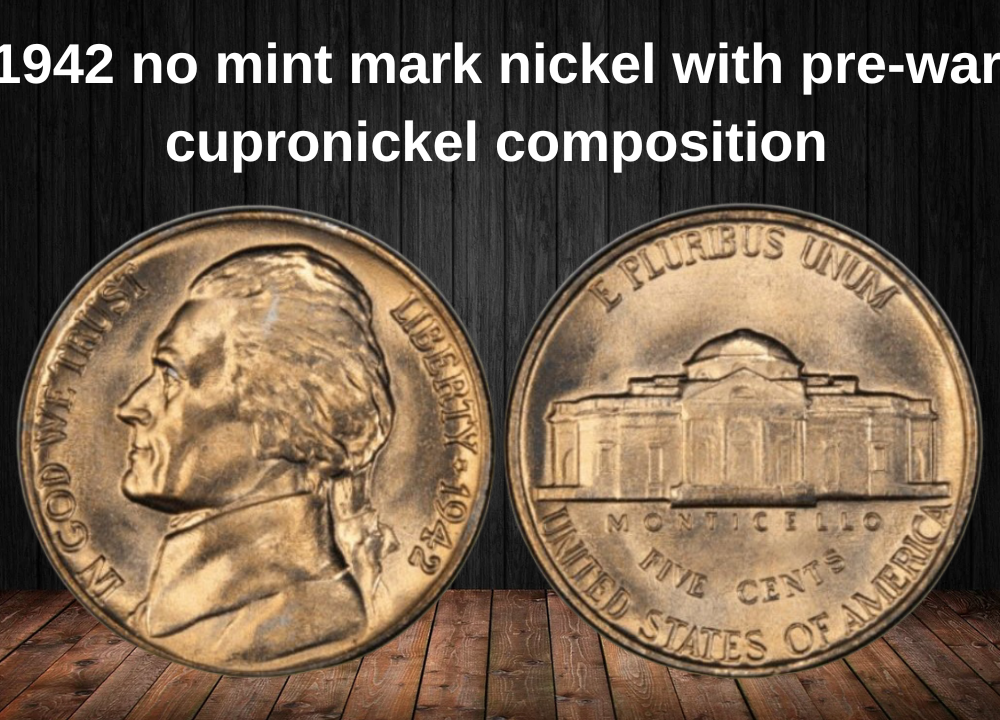
Before transitioning to the wartime silver alloy, the Philadelphia Mint struck approximately 49,789,000 Jefferson nickels in 1942 using the traditional 75% copper and 25% nickel alloy—now known as the Type 1 variety.
These pre-war nickels are relatively common, especially in lower grades. In circulated condition, they typically sell for just a few dollars. However, values increase significantly as you move up the grading scale:
- In mint state (MS60–MS67), prices range from about $1 to $2,500, depending on overall quality and strike.
- Coins with the Full Steps (FS) designation—indicating sharply struck steps on Monticello—are more sought-after. These can sell for anywhere from $12 to $8,500.
Some auction results have surprised even seasoned collectors:
- In 2007, a pristine FS example brought in an impressive $11,500.
- And remarkably, in 2016, a low-grade specimen sold for $9,988, proving that rarity and demand can sometimes outweigh technical condition.
2. 1942 P nickel with wartime composition containing 35% silver

Following America’s entry into World War II, the Philadelphia Mint struck approximately 57,873,000 nickels in wartime composition—a unique blend of 56% copper, 35% silver, and 9% manganese. These are known as Type 2 nickels.
What makes this coin especially historic is that it was the first U.S. coin ever to feature a “P” mint mark, which appears above Monticello’s dome on the reverse.
Despite their silver content, circulated examples remain relatively affordable, typically valued at $1 to $3. In mint state, prices increase significantly:
- MS60 to MS67 coins usually sell between $6 and $135, depending on condition.
- Full Steps (FS) examples—nickels with fully defined Monticello steps—command higher premiums, ranging from $10 to $1,500.
- Top-grade FS coins (MS68) can reach values of $3,000 or more.
A standout sale occurred on eBay, where one 1942-P Full Steps nickel graded MS68 fetched a remarkable $5,950, setting a high benchmark for this wartime issue.
1942 Proof Jefferson Nickel Value
In 1942, the Philadelphia Mint produced two distinct types of proof nickels for collectors:
1. 1942 no mint mark proof nickel with pre-war cupronickel composition
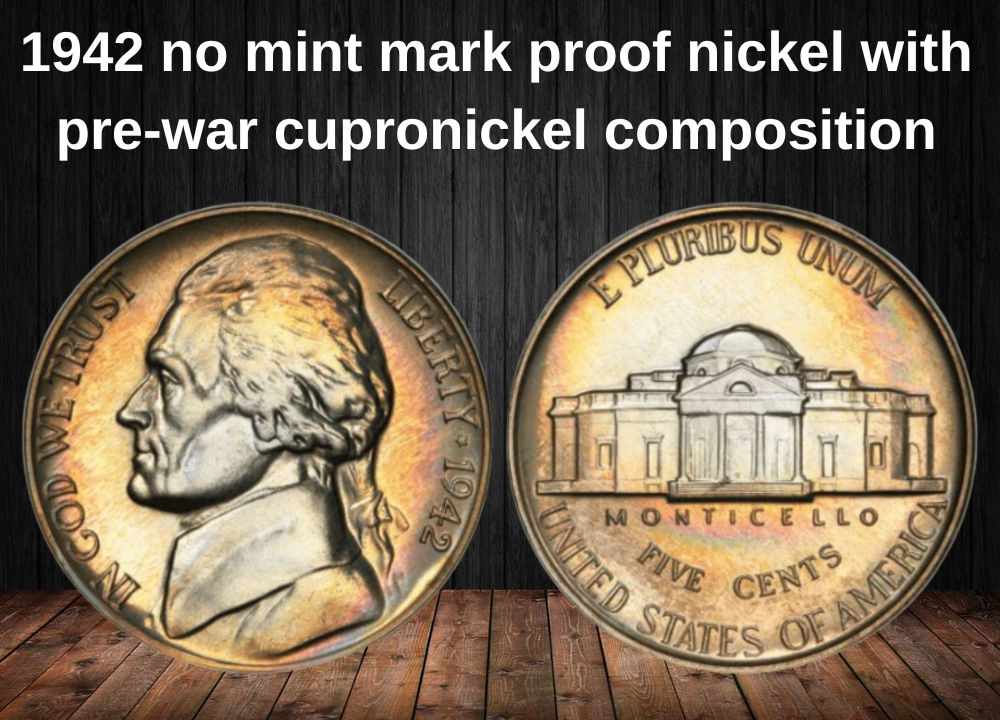
In 1942, the Philadelphia Mint struck 29,600 proof nickels without a mint mark, marking the last proof nickel production until 1950. These Type 1 copper-nickel proofs have become desirable collector’s items today.
Current values vary widely depending on condition and rarity:
- Typical prices range from about $12 up to $16,500.
- Surprisingly, some PR68 graded coins sell for around $2,650, reflecting their relative scarcity.
- Coins with cameo contrast—a frosted design against a mirror-like background—often command higher premiums due to their striking appearance.
The most valuable piece in this series is a PR68+ example, which fetched an impressive $16,450 at a 2023 auction. By comparison, a PR66 Cameo (CAM) Type 1 coin sold for a solid $5,000, demonstrating the premium collectors place on cameo finishes.
2. 1942 P proof nickel with wartime composition containing 35% silver
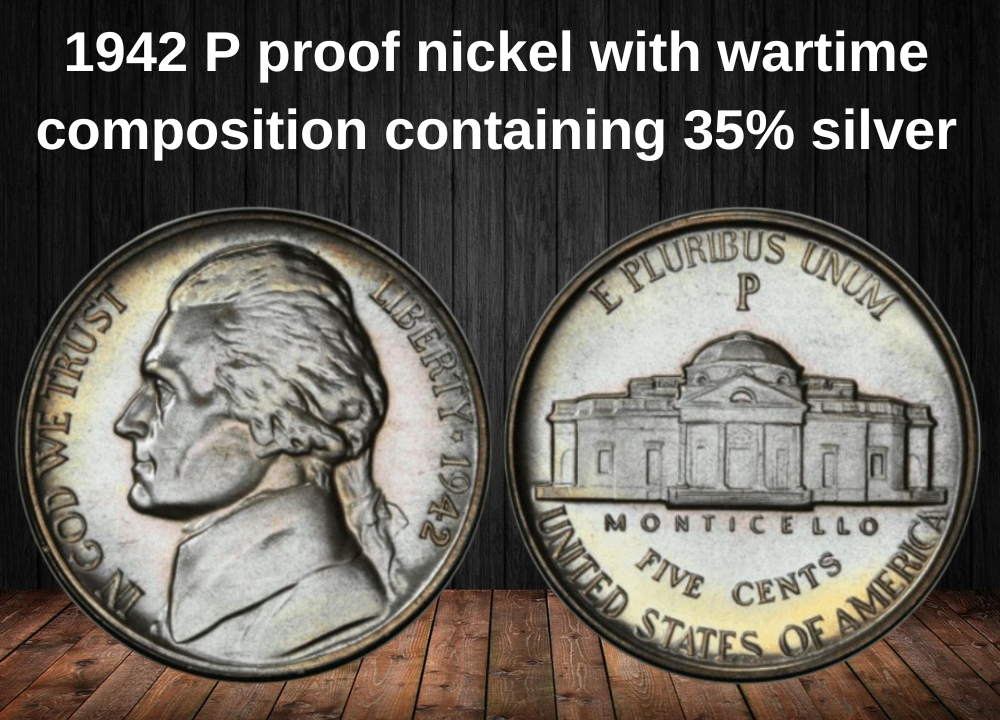
The Type 2 proof nickels from 1942 bear the “P” mint mark on the reverse and were struck at the Philadelphia Mint. Only 27,600 of these silver-containing proofs were produced, making them relatively rare and highly sought after by collectors.
Current market values range widely depending on condition:
- Circulated and lower-grade proofs typically start around $30.
- Top-tier specimens graded PR69 can command prices as high as $32,500.
The most notable sale was a PR68+ nickel, which sold for $12,600 in 2021. Interestingly, coins with cameo (CAM) and deep cameo (DCAM) finishes did not always fetch higher prices despite their visual appeal:
- A cameo specimen achieved $14,100 at auction.
- Meanwhile, a deep cameo (DCAM) piece sold for $6,463 the same year.
These variations highlight how market demand and rarity can influence pricing beyond just finish quality.
1942 D Nickel
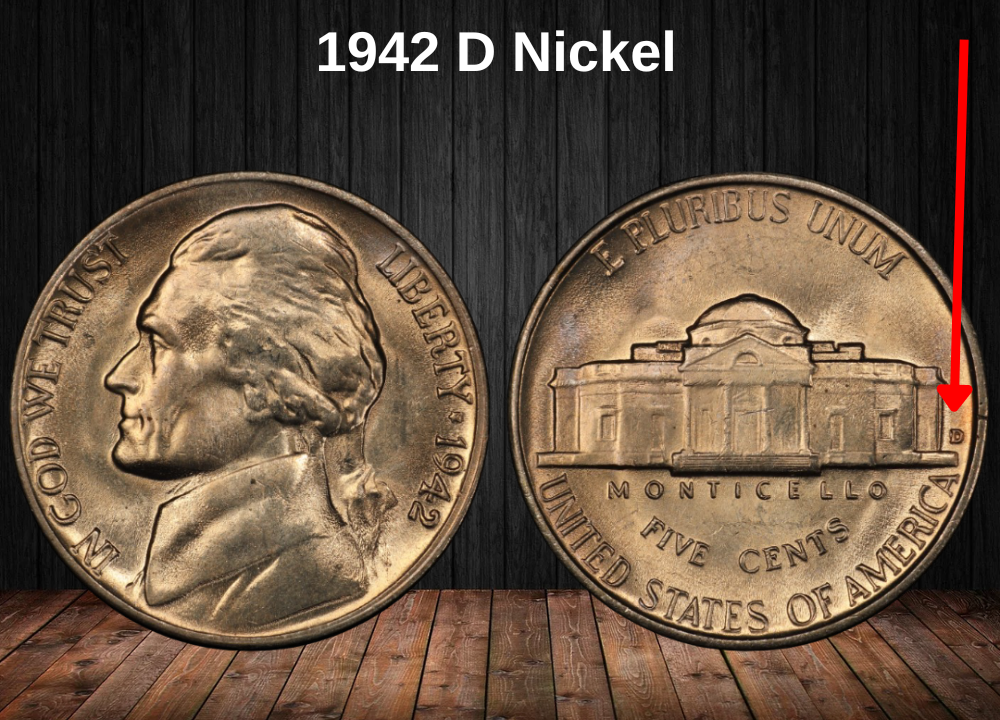
The Denver Mint produced 13,938,000 nickels in 1942, all featuring the pre-war cupronickel composition. Today, their value depends greatly on condition:
- Circulated coins typically range from $1 up to $260.
- Nickels with the coveted Full Steps designation generally command higher prices.
On average, well-preserved pieces sell between $24 and $475. However, collectors seeking top-grade specimens are often willing to pay over $1,000.
Notable sales include:
- A 1942-D Jefferson nickel graded MS67+ that fetched $1,800.
- An even rarer MS67+ Full Steps coin, which sold for $4,320 in 2021.
These premiums reflect the high demand for pristine and well-struck examples from this wartime issue.
1942 S Nickel Value
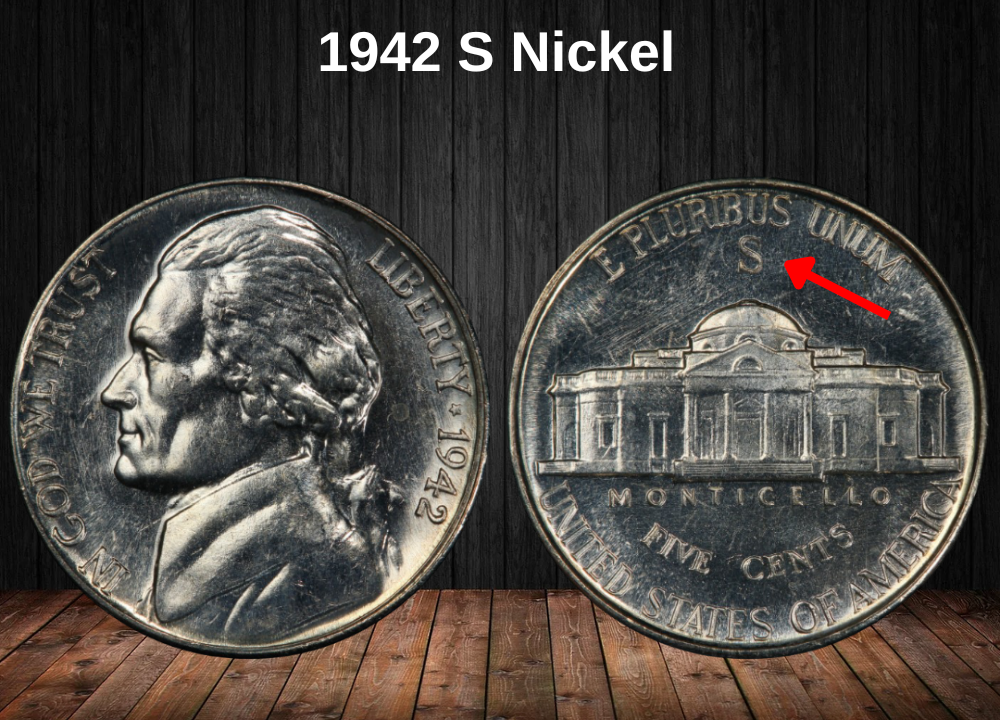
The San Francisco Mint exclusively produced wartime nickels in 1942, striking approximately 32,900,000 coins containing 35% silver.
On the market today, circulated examples typically sell for between $3 and $6. Uncirculated specimens command higher prices, generally ranging from $7 up to $80 depending on their condition.
Nickels featuring the highly sought-after Full Steps (FS) error are valued even more, with prices spanning from about $8 to $8,500, based largely on their grade and preservation.
Rare 1942 Nickel Error List
Frith 1942 Nickel Error
The Frith 1942 nickel is a unique and highly prized error coin discovered in 1961. While it is a wartime nickel made with 35% silver, it stands out because its mint mark “S” is positioned to the right of Monticello, instead of the usual location above the dome.
This one-of-a-kind error has an estimated value of approximately $175,000, making it one of the most valuable and fascinating nickels from the WWII era.
Re-punched Mint Mark Errors
Some 1942 nickels feature re-punched mint marks (RPM) on the reverse, where the P, D, or S mint mark was struck more than once, causing overlapping or doubled impressions. Among these, the most famous is the 1942 D over horizontal D, where the mint mark was punched twice at roughly a 90-degree angle.
These coins are relatively rare and can be quite valuable, with prices generally ranging from $135 up to $5,750, depending on condition. Nickels that also exhibit the prized Full Steps error command even higher prices, usually between $3,000 and $7,250.
Noteworthy auction records include:
- A 1942 D over D RPM piece sold for $15,275 in 2013.
- The most expensive specimen, a Full Steps RPM, fetched an impressive $32,200 in 2006.
There are also doubled P mint mark varieties. For example, a 1942 P/P MS66 Type 2 RPM nickel sold for $1,050 in 2022.
1942 Nickel Double Die Obverse (DDO) Error
The Double Die Obverse (DDO) error happens when the coin’s obverse design is struck twice or even three times by the die during minting. This results in noticeable doubling on various parts of the design, and each coin with this error is unique in its details.
While interesting to collectors, these DDO nickels typically have a modest market value, generally selling for a few hundred dollars depending on the severity and clarity of the doubling.
Where to sell your nickel?
Now that you’re aware of your nickel’s value, you may be curious about the best places to sell it. Don’t worry: here’s a rundown of some top online marketplaces where you can conveniently sell your nickels, along with their benefits and drawbacks.
Explore the best platforms for selling nickels online (advantages and disadvantages).
FAQ about the 1942 Jefferson Nickel
1. What are the key mint marks for the 1942 Jefferson Nickel, and how do they affect value?
The 1942 Jefferson Nickel was minted at Philadelphia (no mint mark), Denver (D), and San Francisco (S). The San Francisco (S) mint coins are generally scarcer in higher grades, which can increase their value. Denver (D) coins are less common than Philadelphia, and mint mark presence is a crucial factor for collectors.
2. How does the 1942 nickel’s composition differ from other years, and what impact does this have?
In 1942, Jefferson Nickels were struck in the standard copper-nickel alloy early in the year. Later in 1942, due to wartime metal shortages, the Mint switched to a “war nickel” composition containing 35% silver. The early 1942 nickels are less valuable than the war nickels due to the lack of silver content.
3. Are there any notable varieties or errors specific to the 1942 Jefferson Nickel?
Yes, 1942 nickels have some known varieties, including differences in mint mark placement, and the “over punched” D mint marks. There are also some rare doubled dies and die cracks collectors seek. Varieties can add significant premiums if authenticated.
4. How does the transition from regular to “war nickels” affect collector interest in 1942 coins?
The transition year makes 1942 coins especially interesting because it represents the switch from standard alloy to silver content. Collectors prize the early 1942 nickels for their place in this shift and often seek to collect both versions to complete sets.
5. What is the approximate market value range for 1942 Jefferson Nickels in circulated and uncirculated conditions?
Circulated 1942 nickels typically range from $0.20 to $3 depending on condition and mint mark. Uncirculated examples, especially from Denver or San Francisco, can range from $10 to over $100, with proof coins commanding even higher premiums.
6. Are there any significant differences in strike quality among the 1942 mint locations?
San Francisco proofs tend to have the highest strike quality and eye appeal. Philadelphia coins are generally more common but may have variable strike sharpness. Denver coins are known for solid strike quality but are less common in high grades.
7. What tips do experts recommend for authenticating and grading 1942 Jefferson Nickels?
Experts advise careful examination of mint marks, die characteristics, and wear patterns. Using certified grading services (PCGS, NGC) helps ensure authenticity. Checking for proper weight and composition, especially to distinguish early 1942 copper-nickels from later silver war nickels, is essential.

